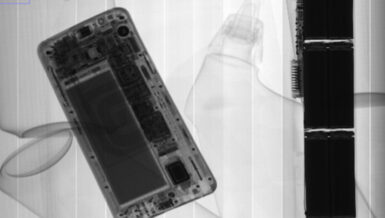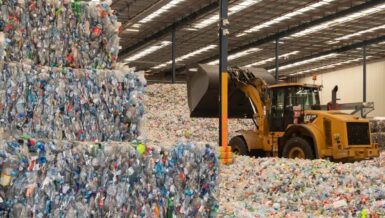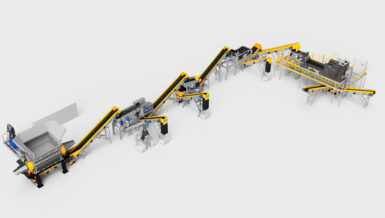Drone-based inspections—once viewed as experimental—have now become one of the most effective tools for addressing these challenges. Whether monitoring stockpiles, detecting hotspots in waste piles, assessing landfill capacity, or identifying illegal dumping activities, drones are transforming how recycling facilities operate.
This article explores how drone technology improves safety, efficiency, compliance, environmental protection, and operational decision-making. It also identifies key use cases for metal, plastic, paper, and e-waste recyclers, as well as landfills, MRFs, and waste-to-energy sites.
1. A Major Leap in Safety: Keeping People Away from Hazards
1.1 Remote Inspection of Dangerous Areas
Recycling facilities contain multiple high-risk zones:
- unstable scrap piles
- high stockpiles of combustible materials
- confined spaces with poor ventilation
- steep slopes in landfills
- high structures such as silos, conveyors, and sorting platforms
Drones eliminate the need for workers to climb, enter, or physically approach these areas. This reduces the likelihood of:
- falls from height
- crushing accidents
- vehicle collisions
- exposure to harmful gases
- fires and explosions
For many operations, this shift alone has reduced their most common safety incidents.
1.2 Thermal Cameras for Early Fire Detection
Recycling fires have surged worldwide, mainly due to lithium batteries hidden in incoming waste streams. Thermal-camera drones detect:
- hotspots deep inside stockpiles
- self-heating zones in paper, RDF, or biomass piles
- risks caused by chemical reactions
- underground fires at landfills
- overheating conveyors or machinery
In Australia, random drone flyovers at recycling centers identified hundreds of high-risk hotspots—preventing potential fires before they ignite.
1.3 Reduced On-site Traffic
By replacing many manual inspections, drone programs reduce the number of:
- forklifts
- wheel loaders
- pickup trucks
- personnel on foot
Less movement = fewer collisions and fewer potential injuries.
2. Speed & Efficiency: Data Capture at Unmatched Scale
2.1 Faster Site Surveys
A drone can survey an entire scrap yard or landfill in minutes—tasks that could take crews hours or days. This enables:
- more frequent inspections
- faster reporting
- more precise decision-making
Many recyclers shifted from quarterly surveys to weekly or even daily assessments.
2.2 Accurate Stockpile Measurement
Accurate volume measurement is critical for recycling businesses:
- paper & cardboard stockpiles
- metal scrap piles
- plastics (PET, HDPE, LDPE)
- refuse-derived fuel (RDF)
- e-waste storage zones
Drones equipped with photogrammetry or LiDAR generate 3D models with centimeter-level accuracy, outperforming manual measurement methods.
The result:
Fewer inventory disputes, better material flow planning, and stronger financial forecasting.
2.3 Lower Operational Costs
Manual inspections require:
- multiple staff
- working at height equipment
- vehicle fuel
- shutdowns or restricted zones
Drones reduce or eliminate these tasks. Many facilities report:
- 30–60% lower inspection costs
- up to 90% faster reporting
3. Environmental and Compliance Benefits
3.1 Methane and Gas Monitoring at Landfills
Methane is odorless, colorless, and highly explosive. Drones equipped with gas-detection sensors can:
- Identify methane leaks
- map concentrations across landfill cells
- support EPA or EU compliance reporting
- detect emissions exceeding legal limits
The SnifferDRONE in the U.S. has become a benchmark for methane monitoring, achieving 90% leak-source accuracy.
3.2 Illegal Dumping Surveillance
Cities like Dublin and multiple UK municipalities use drones to:
- monitor remote areas
- Detect illegal waste dumping
- gather video evidence for prosecution
- track dumping patterns
This saves municipalities enormous cleanup costs.
3.3 Ocean and Coastal Cleanup
Drone-based initiatives like The Plastic Tide use aerial imagery to:
- Identify marine plastic hotspots
- build AI models for recognizing debris
- guide cleanup operations
- track seasonal pollution patterns
Water-based drones like WasteShark autonomously collect floating plastics in rivers and harbors.
4. Five Core Drone Applications in Recycling
1. Stockpile & Inventory Mapping
High-resolution 3D mapping supports:
- financial auditing
- material flow planning
- contractual verification
2. Fire Prevention
Early detection using thermal imagery.
3. Environmental Monitoring
Methane detection, gas mapping, dust plumes.
4. Illegal Dumping Enforcement
5. Ocean & Waterway Pollution Control
5. Barriers to Adoption — and How to Overcome Them
- regulatory restrictions (airspace, privacy laws)
- initial investment cost
- pilot training requirements
- data management and analysis
- weather sensitivity
Solutions include:
- automated flight paths
- rugged industrial drones
- AI-powered analytics platforms
- subscription-based drone-as-a-service programs
Conclusion: Drones Are Becoming Essential Infrastructure
Recycling facilities worldwide are adopting drones not as experimental gadgets, but as core operational tools that:
- keep workers out of danger
- cut costs
- provide unmatched data quality
- support environmental sustainability
Drone-based inspections are no longer “nice to have”—they are quickly becoming industry standard.








